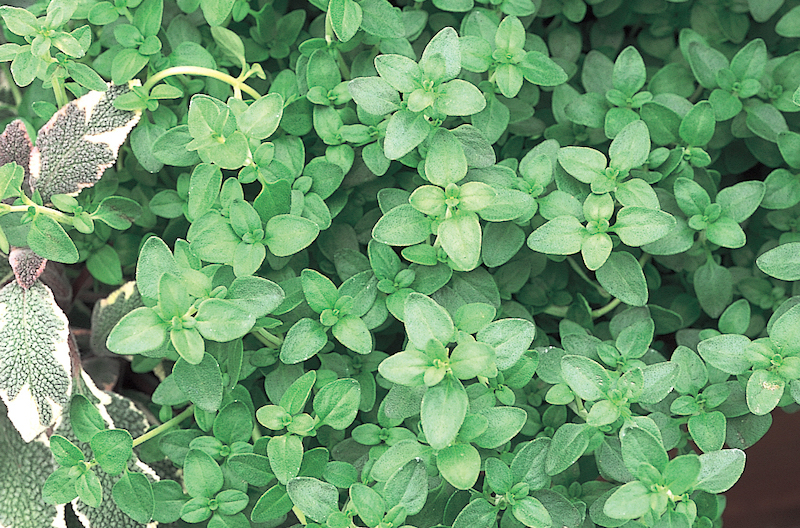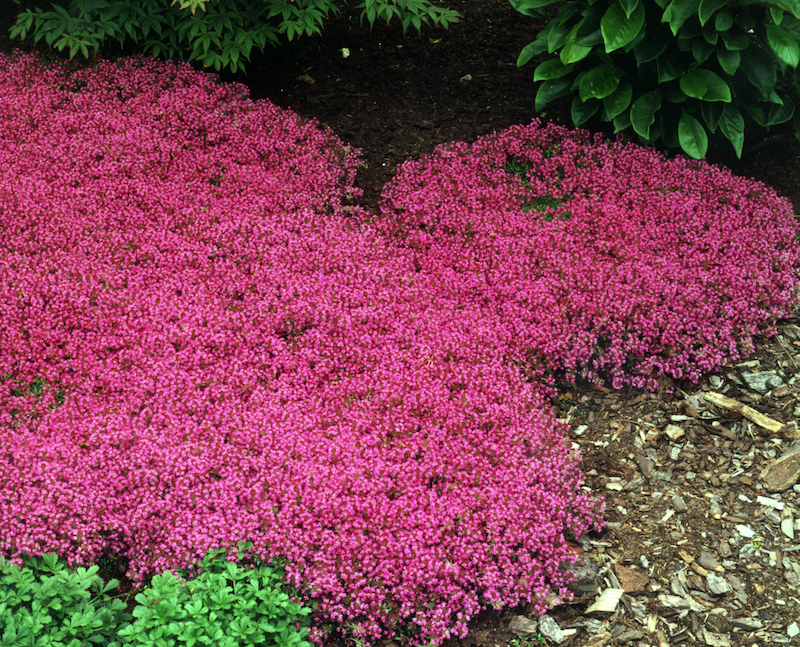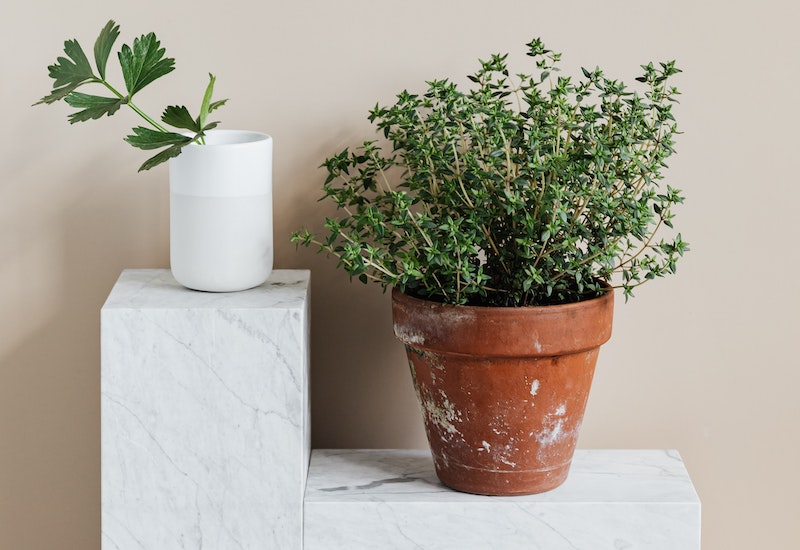Growing Thyme
Thyme (Thymus vulgaris) is a perennial herb that grows in zones 5 to 9. Thyme is in the mint family and originates from the Mediterranean area of Europe and Northern Africa. This herb has gray-green leaves that have a strong, fresh aroma. Thyme develops tiny flowers that are light purple in color and attract beneficial pollinators like butterflies and bees.
Frost and drought tolerant when established, this herb can handle tough environments. It has a low-growing, mounded growth habit. Thyme reaches a mature size of 6 to 12 inches tall and 6 to 16 inches wide. This plant makes a beautiful groundcover and it is ideal for pollinator, culinary, and low-water gardens.

Planting Thyme
Select a location that gets bright sun and has well-draining soil. Thyme grows best when it receives at least 6-8 hours of direct sunlight daily. Amend the soil with compost upon planting if necessary, but keep in mind thyme prefers a neutral soil pH. You’ll see the best growth results when your thyme is planted in dry rocky soils; avoid planting in clay-based soil.
Plant outdoors in the spring after the last frost. Space thyme plants 1-2 feet apart to allow for adequate air circulation. Some great companion herbs that could be planted next to your thyme are oregano and rosemary.

Watering Thyme
Water your thyme deeply, but only after the soil has completely dried out. Allowing the soil to dry out between waterings will prevent disease and pest issues. Overwatering this plant will likely lead to irreversible root rot. This Mediterranean native thrives in dry, hot climates.
Once your thyme has established its roots, it won’t need much care or moisture. Water when the soil is visibly dry, approximately every few weeks. When it is time, deeply water your plant and wait for it to dry out again.
Fertilizing Thyme
Thyme is generally not a heavy feeder and has low nutrient requirements. For your plant to thrive, feed once each spring using half-strength plant food. Diluted general-purpose fertilizer should be adequate for this herb. Use fertilizer sparingly to preserve the thyme’s rich, savory flavor.
When potting this plant, use a nutrient-rich potting mix with good drainage, and place it in a bright location. Given those three conditions, this herb will usually thrive.
Pruning Thyme
Harvest this herb as needed throughout the growing season. You can also cut above points of new growth in the spring and summer to control your thyme’s size. Snip off some fresh thyme whenever you feel like cooking–it pairs well with vegetables and meats! Avoid pruning more than one-third of the whole thyme plant in one session.
After several years, your thyme will need to be divided to make room for new growth. Additionally, your potted thyme plants are going to need a larger sized pot, or to be planted in-ground. If your thyme gets too tall, pinch off the tips to promote lush, bushy growth.

Caring For Thyme in Pots
Thyme is ideal for a container that perches atop your kitchen windowsill. Potted thyme may dry out faster than plants in the landscape, especially in a small herb pot. Make sure to water your thyme deeply once the soil has dried out. This herb would prefer a porous pot or well-draining container in order to let the roots breathe.
Thyme prefers to have a bit of room to spread, but don’t select a container that’s too large because the soil may stay wet for too long. A great pot size would be a 6 or 10-inch diameter, with a depth of 6 inches.
Winter Care for Thyme
This plant goes dormant over winter and returns each spring. Cut back the thyme for winter leaving a few inches to protect the root ball. Thyme is cold hardy and can easily grow in most areas down to USDA zone 5.
If you live in an area with cold winters, it is recommended that you provide your thyme plant with a layer of mulch in late fall. Remove the mulch layer before new growth appears in the spring to allow adequate sunlight. You can leave your potted thyme outside during the winter months as long as the container is frost proof.
 |
Author Chris Link - Published 2-26-2023 |
